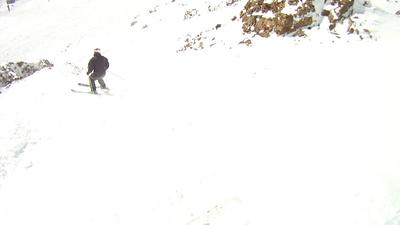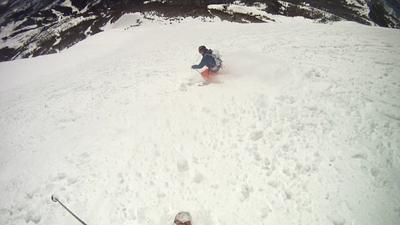So, these two pictures were taken on equally sunny days, on the same slope aspect, at around the same time of day.
Without filter, on the lower pinnacles at Big Sky... no post production.

With filter, on liberty bowl at Big Sky, no post production.

As you can see, the filter does not significantly darken the shot, but it does dramatically cut the glare. With a small amount of brightness/contrast/color work, you have a fairly decent shot. The unfiltered shots however, were almost unusable.
And if you do cut a filter out of 3D glasses, here are some quick and dirty instructions.
First, cut the filter to shape, so that it fits pretty snugly into the housing, in the lens pocket.
Second, get a DARK frying pan with a little water in it, and go to a bright room. Rotate the filter until the reflections on the surface of the water disappear. If it doesn't work, flip the filter around, and try again. You should notice a point where the reflections on the surface of the pan water disappear. You may need to move around a bit so that there are obvious reflections on the waters surface before you do this though. Then when you find the sweet spot where the reflections disappear, carefully push the filter into the camera housing, and try not to rotate it as you do so. You then should have a correctly placed filter.
Note: when you press the camera into the housing, you will probably notice the filter wrinkle a little bit(because the lens is not flat, it will do this). However, it does not affect the footage at all.













